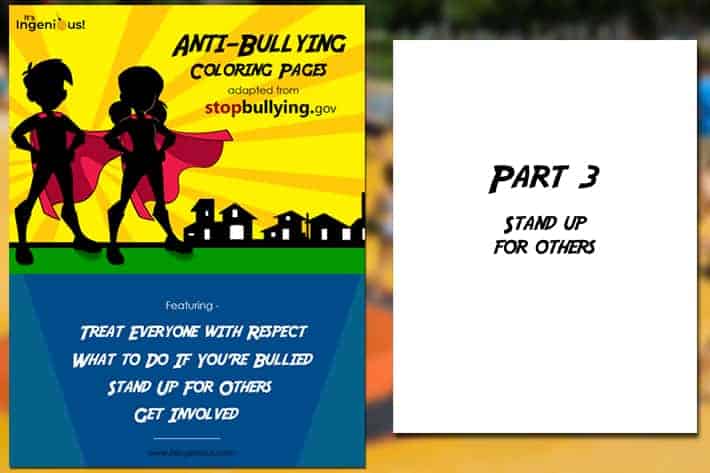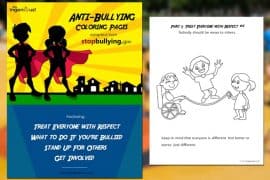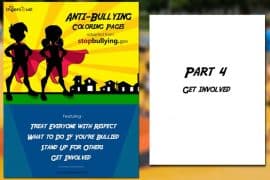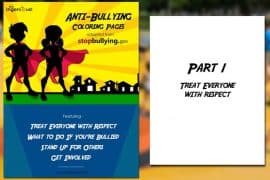“When you see bullying, there are safe things you can do to make it stop.”
These coloring pages are adapted from the material at StopBullying.gov and you should go there for additional help. You can download them individually from this page or download the entire anti-bullying coloring book here.
1. “Talk to a parent, teacher, or another adult you trust. Adults need to know when bad things happen so they can help.”

Teaching children “if you see something, say something” is an incredibly valuable way to give them control over their environment.
Adults are not always able to see everything that happens. Many children may feel uncomfortable saying something because they don’t want to be told they are tattling or being nosy.
To help kids understand when it’s important to find an adult to intervene, create lists of scenarios they can put into “tattling” or “telling” groups.
One scenario for example might be seeing a child push another child down (tell), or seeing a note from a classmate on a message board about a plan to hurt others (tell), or a student sticking his or her tongue out at someone else (tattling) etc.
2: “Be kind to the kid being bullied. Show them that you care by trying to include them. Sit with them at lunch or on the bus, talk to them at school, or invite them to do something. Just hanging out with them will help them know they aren’t alone.”

Even if your child or student isn’t being bullied, he or she probably knows someone that is.
Help your students or children understand how a child who is being bullied feels. Watching the movie Wonder is a great way to show them the perspective of a child being bullied. Then, help them brainstorm ways to reach out to a peer who is experiencing bullying.
You might even consider holding a class fundraiser to purchase or make a Buddy Bench, and then teach the students that if a child is sitting on that bench, it means that he or she is feeling lonely and wants to be included. If they see someone on the bench, they should go over and offer to talk, play or be a friend.









Comments are closed.